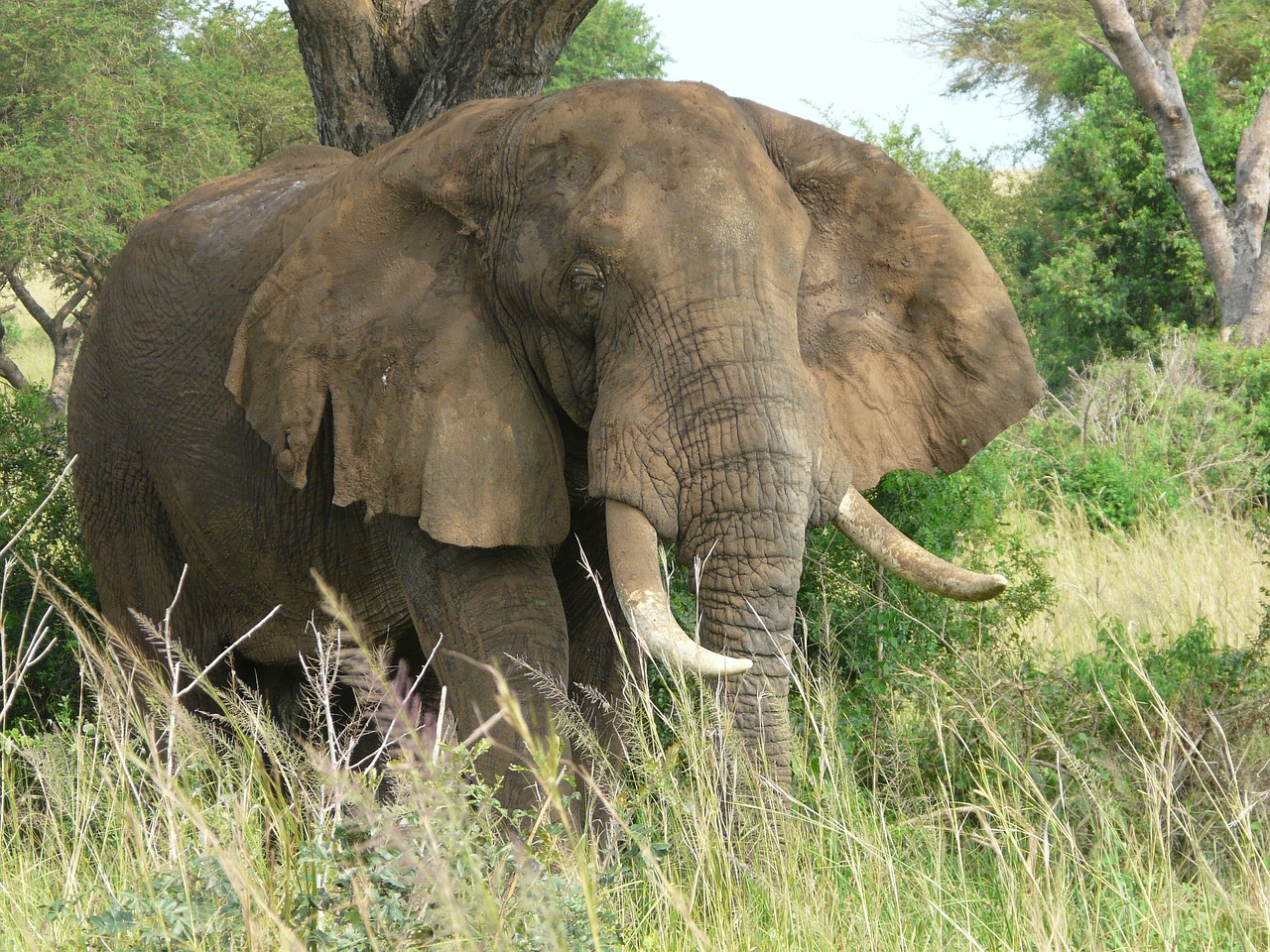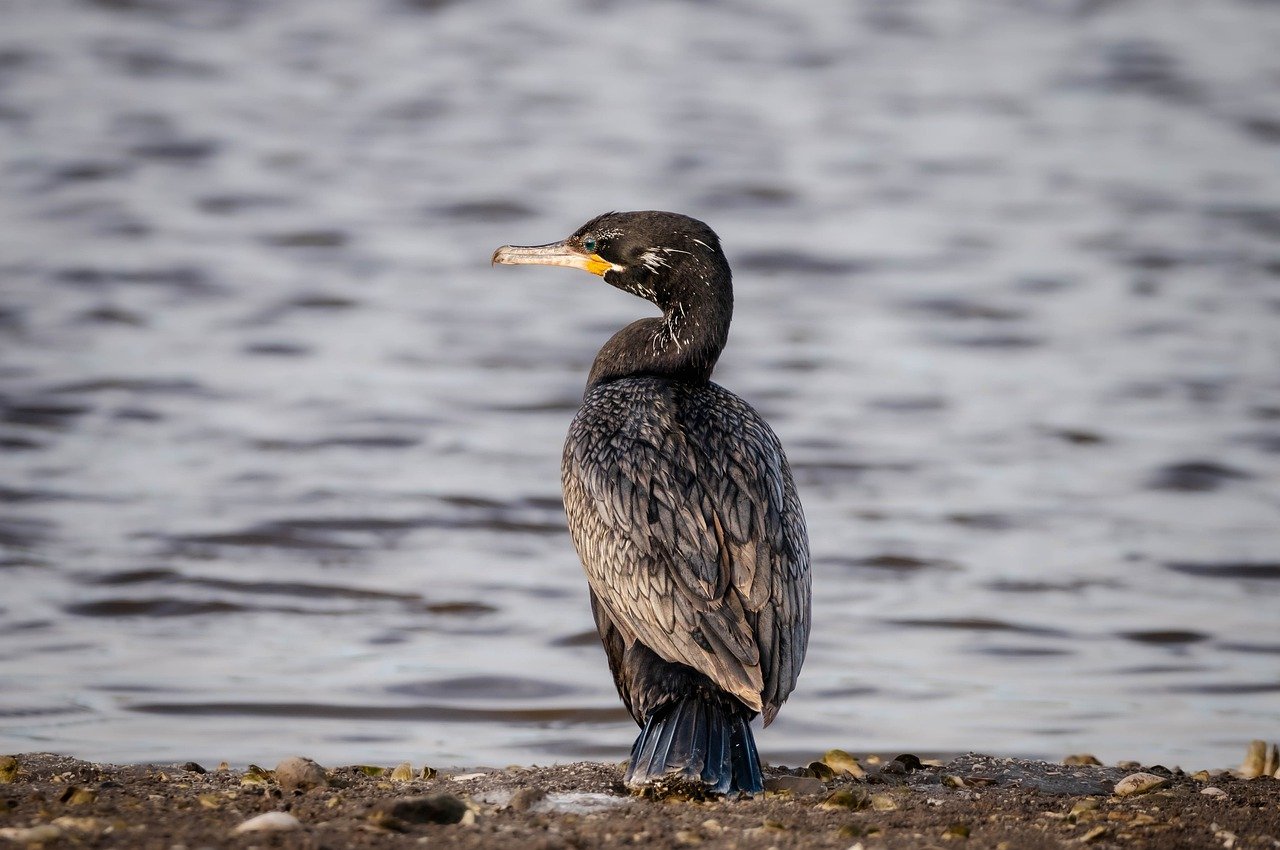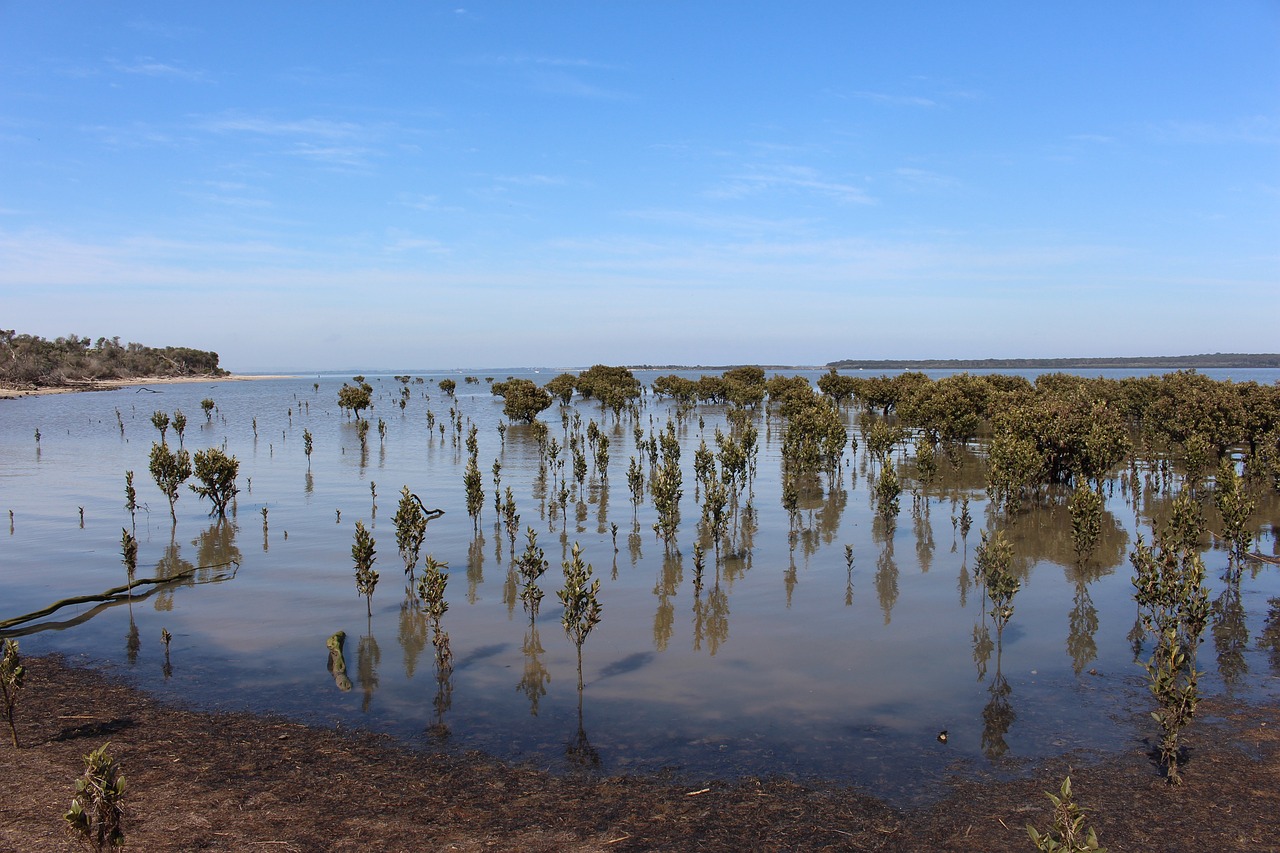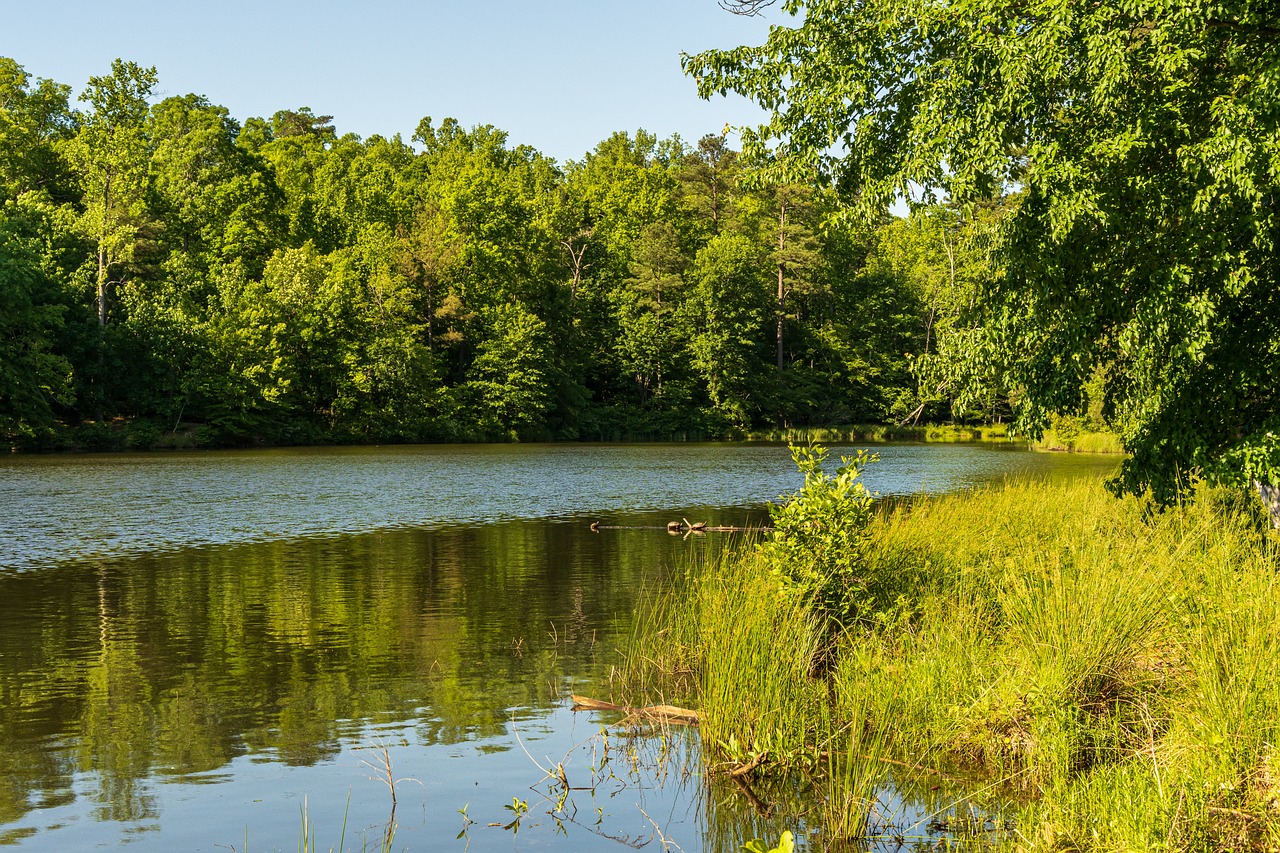The Role of Blockchain in Protecting Wildlife and Nature
In today's rapidly changing world, the intersection of technology and conservation has never been more crucial. As we face alarming rates of biodiversity loss and environmental degradation, innovative solutions are essential to protect our planet's precious wildlife and natural resources. One such groundbreaking technology is blockchain. At its core, blockchain is a decentralized digital ledger that records transactions across many computers, ensuring that the data can't be altered retroactively. This inherent security and transparency make it an ideal tool for wildlife conservation efforts.
Imagine a world where every endangered species has its own digital identity, securely stored and easily accessible to conservationists, researchers, and even the general public. Blockchain can make this vision a reality by providing a robust framework for tracking and monitoring endangered species. With the ability to create immutable records, stakeholders can ensure accountability and enhance collaboration in conservation initiatives. This technology not only empowers organizations but also fosters trust among donors and the community, paving the way for a future where wildlife protection is prioritized and effective.
Moreover, blockchain's potential extends beyond just tracking species. It can also play a pivotal role in combating poaching and illegal wildlife trade, which are significant threats to biodiversity. By establishing transparent supply chains, blockchain can verify the legality of wildlife products, making it increasingly difficult for illegal activities to thrive. As we delve deeper into the applications of blockchain in wildlife conservation, we will uncover various innovative uses that highlight its transformative power in safeguarding nature.
As we explore the nuances of blockchain technology, it becomes clear that its benefits are not limited to just one aspect of conservation. From enhancing transparency in funding allocation to facilitating real-time data sharing, blockchain offers a multifaceted approach to addressing the challenges faced by conservationists today. The future of wildlife protection may very well hinge on our ability to harness the power of this revolutionary technology.
To fully appreciate the impact of blockchain on wildlife conservation, it's essential to grasp its fundamental principles. At its heart, blockchain consists of a series of blocks that contain data, transactions, and timestamps, all linked together in a secure and chronological order. Each block is connected to the previous one, forming a chain that is nearly impossible to alter without consensus from the network. This decentralized nature means that no single entity has control over the entire database, enhancing security and trust.
When it comes to wildlife conservation, blockchain's ability to provide a transparent and verifiable record of data is invaluable. For example, conservation organizations can use blockchain to track the movement of endangered species, monitor habitat changes, and even manage donations for conservation projects. The real-time data sharing capabilities enabled by blockchain allow various stakeholders—such as governments, NGOs, and local communities—to access and contribute to wildlife data, fostering collaboration and improving overall conservation efforts.
As we dive into the various applications of blockchain in wildlife conservation, it's essential to recognize the innovative ways this technology can address pressing issues. From tracking endangered species to combating poaching, blockchain has the potential to revolutionize the way we protect our planet's biodiversity.
One of the most promising applications of blockchain in wildlife conservation is its ability to create immutable records of endangered species. This technology enhances tracking and monitoring efforts while promoting accountability among conservation organizations. By utilizing blockchain, organizations can ensure that data related to endangered species is accurate, up-to-date, and accessible to all stakeholders involved in conservation efforts.
Real-time data sharing is crucial for effective wildlife conservation. Blockchain technology enables various stakeholders to access and contribute to wildlife data seamlessly. This means that researchers, conservationists, and local communities can collaborate more effectively, sharing insights and strategies to protect endangered species. Imagine the power of having a global network of individuals and organizations all working together, armed with the same up-to-date information!
Several successful case studies highlight the effectiveness of blockchain for tracking endangered species. For instance, projects in Africa have utilized blockchain to monitor elephant populations, ensuring that data is securely stored and easily accessible. These initiatives showcase the potential of blockchain to enhance conservation efforts and inspire further adoption of this technology in various regions around the globe.
Poaching and illegal wildlife trade are devastating threats to biodiversity, but blockchain offers a promising solution. By providing transparent supply chains and verifying the legality of wildlife products, blockchain can help combat these illicit activities. With a secure record of transactions, consumers can make informed choices, while law enforcement agencies can track and disrupt illegal operations more effectively.
Transparency is a critical component of successful conservation funding. Blockchain can enhance this transparency by ensuring that donations and grants are used effectively and reach the intended projects. By utilizing smart contracts, organizations can automate and secure funding allocation, minimizing mismanagement and fostering trust among donors.
Smart contracts are self-executing contracts with the terms of the agreement directly written into code. In the context of conservation funding, these contracts can automate the distribution of funds, ensuring that money is allocated only when specific conditions are met. This not only streamlines the process but also increases accountability, as donors can track how their contributions are being utilized.
Accurate impact assessments and reporting are essential for measuring the effectiveness of conservation projects. Blockchain can facilitate this process by providing a secure and transparent record of activities and outcomes. Stakeholders can access real-time data, enabling them to evaluate the success of initiatives and make informed decisions for future projects.
While the potential of blockchain in wildlife conservation is immense, there are challenges and limitations that need to be addressed. Technical hurdles, such as scalability and interoperability, can hinder the widespread adoption of blockchain solutions. Additionally, financial constraints may limit the ability of organizations to implement this technology effectively. Regulatory hurdles also pose challenges, as existing laws may not adequately address the unique aspects of blockchain applications in conservation.
Looking ahead, the future of blockchain in environmental protection is filled with promise. Emerging trends and innovations, such as the integration of artificial intelligence and the Internet of Things (IoT), could further enhance the effectiveness of blockchain in safeguarding nature. As more organizations recognize the value of this technology, we may witness a transformative shift in how we approach wildlife conservation and environmental protection, ultimately leading to a more sustainable future for our planet.
- What is blockchain technology? Blockchain is a decentralized digital ledger that records transactions securely and transparently across multiple computers.
- How can blockchain help wildlife conservation? Blockchain can track endangered species, combat poaching, enhance transparency in funding, and facilitate real-time data sharing.
- What are smart contracts? Smart contracts are self-executing contracts with the terms written into code, automating processes like funding allocation in conservation projects.
- What challenges does blockchain face in conservation? Challenges include technical hurdles, financial constraints, and regulatory issues that may hinder its implementation.

Understanding Blockchain Technology
Blockchain technology is often hailed as the backbone of cryptocurrencies, but its potential extends far beyond digital currencies. At its core, blockchain is a decentralized digital ledger that records transactions across multiple computers in such a way that the registered transactions cannot be altered retroactively. This creates a system of trust, as every participant on the network has access to the same information, ensuring transparency and security.
Imagine a digital notebook that everyone can read but no one can erase or alter. This is the essence of blockchain. Each entry or transaction is grouped into blocks, and these blocks are linked together in chronological order, forming a chain. This structure is what gives blockchain its name. The decentralized nature of blockchain means that it does not rely on a central authority, making it resistant to fraud and manipulation.
The fundamental principles of blockchain can be summarized as follows:
- Decentralization: Unlike traditional databases that are controlled by a single entity, blockchain is distributed across a network of computers (nodes), ensuring that no single party has control over the entire chain.
- Transparency: All transactions are visible to participants in the network, promoting accountability and trust.
- Immutability: Once a block is added to the chain, it cannot be changed or deleted, which preserves the integrity of the data.
- Security: Advanced cryptographic techniques protect the data, making unauthorized access extremely difficult.
These principles set the stage for blockchain's application in various fields, including wildlife conservation and environmental protection. By leveraging the unique features of blockchain, organizations can enhance their efforts to track endangered species, combat poaching, and ensure that conservation funding is used effectively.
Furthermore, the potential for real-time data sharing through blockchain technology offers a significant advantage for conservationists. Imagine a world where data about wildlife populations, migration patterns, and poaching incidents can be shared instantly among governments, NGOs, and local communities. This level of collaboration can lead to more informed decision-making and a stronger collective response to environmental challenges.
As we delve deeper into the applications of blockchain in wildlife conservation, it becomes clear that this technology is not just a buzzword; it is a powerful tool that can drive meaningful change in our efforts to protect the planet's biodiversity. The journey of understanding how blockchain can be harnessed for the greater good is just beginning, and it promises to be as exciting as it is essential.

Blockchain Applications in Wildlife Conservation
As we dive into the fascinating world of wildlife conservation, it's essential to recognize the transformative potential of blockchain technology. Imagine a world where every endangered species is monitored in real-time, where poaching is tackled through transparent supply chains, and where funding for conservation projects is allocated with utmost integrity. Blockchain is not just a buzzword; it’s a revolutionary tool that can reshape how we protect our planet's precious biodiversity.
One of the most exciting applications of blockchain in wildlife conservation is its ability to track endangered species. By creating immutable records, conservationists can monitor populations more effectively. These records are not just data points; they are lifelines for species at risk of extinction. For instance, using blockchain, researchers can log sightings, health data, and migration patterns. This information can be accessed by various stakeholders, from scientists to policymakers, fostering a collaborative approach to conservation.
Imagine if scientists, wildlife rangers, and conservation organizations could share data instantly, regardless of their location. With blockchain, this is a reality. The technology allows for real-time data sharing, breaking down silos and enabling quick responses to emerging threats. For example, if a poaching incident occurs, alerts can be sent out immediately, allowing rangers to act swiftly. This level of coordination can significantly enhance conservation efforts, making them more proactive rather than reactive.
Let’s take a moment to consider some successful case studies that showcase the effectiveness of blockchain in tracking endangered species. One notable example is the collaboration between tech companies and conservation groups in Africa, where they implemented a blockchain system to monitor the movements of elephants. By tagging these majestic creatures with GPS collars and logging their data on a blockchain, they could track their migration patterns and identify areas vulnerable to poaching. The results were astounding: poaching rates dropped significantly as rangers had better information and could allocate their resources more effectively.
Similarly, in Southeast Asia, a project aimed at protecting tigers utilized blockchain to create a comprehensive database that included genetic information, habitat data, and individual tracking records. This approach not only enhanced the understanding of tiger populations but also improved breeding programs and habitat restoration efforts. The transparency provided by blockchain ensured that all stakeholders were accountable, fostering a sense of trust and collaboration.
Another critical application of blockchain technology is in the fight against poaching and illegal wildlife trade. By establishing transparent supply chains, blockchain can verify the legality of wildlife products. For example, consider the journey of an elephant tusk from the moment it is harvested to its final destination. With blockchain, every transaction can be recorded, creating an unalterable trail. This level of transparency can deter illegal activities, as buyers will be able to verify the origin of the products they purchase.
Moreover, blockchain can facilitate the creation of digital identities for endangered species. Each animal can have a unique identifier linked to its data, such as health records and genetic information. This not only helps in tracking individual animals but also in ensuring that any trade involving these species is monitored and regulated. In essence, blockchain serves as a guardian, ensuring that nature is treated with the respect it deserves.
In summary, the applications of blockchain in wildlife conservation are vast and varied. From tracking endangered species and sharing critical data in real-time to combating poaching and enhancing transparency in wildlife trade, blockchain technology offers innovative solutions to some of the most pressing challenges in conservation today. As we continue to explore these possibilities, it’s clear that the future of wildlife protection could be brightened significantly by the adoption of blockchain.
- What is blockchain technology? Blockchain is a decentralized digital ledger that records transactions across many computers in a way that the registered transactions cannot be altered retroactively.
- How can blockchain help in wildlife conservation? Blockchain can enhance transparency, improve tracking of endangered species, and ensure that funding for conservation projects is utilized effectively.
- Are there any successful examples of blockchain in conservation? Yes, projects in Africa and Southeast Asia have successfully used blockchain for tracking elephants and tigers, respectively, leading to significant improvements in conservation efforts.
- What are the challenges of implementing blockchain in conservation? Challenges include technical hurdles, financial constraints, and regulatory issues that need to be addressed for effective implementation.

Tracking Endangered Species
In the realm of wildlife conservation, tracking endangered species is not just a necessity; it's a lifeline. Imagine a world where every step of a rare animal is documented, where conservationists can monitor their movements in real-time, and where the data collected is both transparent and immutable. This is where blockchain technology steps into the spotlight, offering innovative solutions to age-old problems in wildlife tracking.
Blockchain creates a decentralized and tamper-proof ledger that can record every sighting, movement, and behavior of endangered species. By utilizing this technology, conservationists can establish a trustworthy database that is accessible to various stakeholders, from researchers to local communities. This ensures that everyone involved has access to the same information, which is crucial for coordinated efforts in conservation.
One of the most significant advantages of using blockchain for tracking endangered species is the concept of real-time data sharing. With traditional methods, data collection can be slow and fragmented, often leading to delays in response to poaching or habitat loss. However, with blockchain, data can be updated instantaneously, allowing for swift action when a threat is detected. Imagine a scenario where a poacher is reported in a protected area; real-time updates can trigger immediate alerts to local authorities, potentially saving countless lives.
Moreover, blockchain can enhance accountability among conservation organizations. By creating immutable records of each species, organizations can demonstrate their efforts and outcomes transparently. This not only builds trust with donors but also fosters collaboration among various entities working towards the same goals. For example, if one organization claims to have successfully tracked a particular species, the data can be verified against the blockchain records, ensuring that claims are backed by solid evidence.
To illustrate the effectiveness of blockchain in tracking endangered species, consider the following case studies:
| Project Name | Location | Impact |
|---|---|---|
| Wildlife Tracker | Africa | Reduced poaching rates by 30% through real-time tracking of elephants. |
| Ocean Guardians | Pacific Ocean | Improved monitoring of endangered sea turtles, leading to a 25% increase in nesting success. |
These examples showcase how blockchain technology is not just a theoretical concept but a practical tool that can yield tangible results in wildlife conservation. By enabling accurate tracking and monitoring, blockchain is paving the way for a future where endangered species are not just numbers on a list but living beings whose existence we actively protect.
In conclusion, tracking endangered species through blockchain technology represents a paradigm shift in conservation efforts. It enhances data integrity, fosters collaboration, and ultimately contributes to the survival of our planet's most vulnerable species. As we continue to innovate and explore the potential of blockchain, the future of wildlife conservation looks brighter than ever.

Real-Time Data Sharing
In the realm of wildlife conservation, is a game changer. Imagine a world where conservationists, researchers, and even local communities can access vital information about endangered species and their habitats at the click of a button. This is not just a dream; it’s a reality made possible by blockchain technology. By utilizing a decentralized network, blockchain allows for the instantaneous exchange of data, ensuring that all stakeholders are on the same page. This level of transparency fosters collaboration, enabling everyone from scientists to activists to contribute to conservation efforts more effectively.
One of the most significant advantages of real-time data sharing is the ability to track changes in wildlife populations and habitats as they happen. For instance, if a new threat arises, such as habitat destruction or poaching activities, alerts can be issued immediately. This rapid response capability can be the difference between life and death for many species. Furthermore, by having access to real-time data, conservation organizations can adjust their strategies on the fly, ensuring that their efforts are as effective as possible.
Moreover, the integration of Internet of Things (IoT) devices with blockchain can enhance real-time data sharing even further. Imagine drones equipped with cameras that monitor wildlife movements or sensors that detect environmental changes. These devices can feed data directly into a blockchain, creating an immutable record that can be accessed by anyone involved in conservation. This seamless flow of information not only improves monitoring efforts but also builds trust among stakeholders, as everyone can verify the data independently.
To illustrate the impact of real-time data sharing, consider the following table that highlights key benefits:
| Benefit | Description |
|---|---|
| Immediate Response | Allows for quick action against emerging threats to wildlife. |
| Enhanced Collaboration | Encourages teamwork among conservationists, researchers, and local communities. |
| Data Integrity | Ensures that all data is accurate and tamper-proof, enhancing trust. |
| Adaptive Strategies | Enables real-time adjustments to conservation strategies based on current data. |
In conclusion, the ability to share data in real-time through blockchain technology is transforming wildlife conservation. It empowers stakeholders to act swiftly, fosters collaboration, and ensures that data integrity is maintained. As we continue to harness this technology, the future of wildlife conservation looks promising, with the potential for more informed and effective strategies to protect our planet's precious biodiversity.
- How does blockchain improve data sharing in wildlife conservation?
Blockchain provides a secure, decentralized platform for real-time data sharing, allowing stakeholders to access and verify information quickly and efficiently. - What role do IoT devices play in this process?
IoT devices can collect data in real-time and feed it directly into the blockchain, enhancing monitoring capabilities and providing immediate insights into wildlife conditions. - Can local communities access this data?
Yes, blockchain technology allows for equitable access to data, empowering local communities to engage in conservation efforts actively.

Case Studies in Species Tracking
When it comes to wildlife conservation, real-world applications of blockchain technology are not just theoretical; they are actively reshaping how we track and protect endangered species. One compelling case study comes from the Wildlife Conservation Society (WCS), which has implemented a blockchain-based system to monitor the movements of elephants in Central Africa. By using blockchain, they created an immutable record of each elephant's location and health data, which is accessible to various stakeholders, including researchers, conservationists, and local communities. This transparency fosters a collective responsibility for the elephants’ welfare, enhancing accountability and collaboration.
Another fascinating example is the collaboration between Conservation X Labs and the World Wildlife Fund (WWF), where they developed a blockchain platform to track the trade of endangered species. This platform allows for the verification of the legality of wildlife products, ensuring that consumers can make informed choices. By utilizing blockchain, they can trace the product's journey from the source to the market, significantly reducing the chances of illegal trade. The platform not only protects the species but also empowers local communities by providing them with legitimate economic opportunities.
Moreover, the Oceanic Society has leveraged blockchain technology to monitor the populations of endangered marine species. Through a decentralized application, they collect data from various research vessels and community observers, which is then stored on the blockchain. This system not only tracks the movements and behaviors of endangered marine life but also allows for real-time updates, which are crucial for immediate conservation actions. The community involvement aspect is vital here; local fishermen can report sightings or changes in marine life, contributing to a more comprehensive understanding of the ecosystem.
The results from these case studies are promising. They demonstrate that blockchain can significantly improve the tracking of endangered species, leading to better conservation outcomes. By creating a transparent and secure method of data sharing, these initiatives have enhanced collaboration among various stakeholders, ensuring that everyone is on the same page regarding conservation efforts. The success of these projects suggests that blockchain can be a game-changer in the field of wildlife conservation, paving the way for future innovations.
As we look ahead, the potential for blockchain to revolutionize species tracking is enormous. With ongoing advancements in technology and increasing global awareness about wildlife conservation, we can expect to see more innovative applications that will not only protect endangered species but also promote biodiversity and sustainability. The key takeaway here is that blockchain is not just a buzzword; it is a practical tool that can help us safeguard our planet's precious wildlife.

Combating Poaching and Illegal Trade
In the ongoing battle against poaching and illegal wildlife trade, blockchain technology emerges as a formidable ally. Imagine a world where every transaction involving wildlife products is recorded in a secure, transparent ledger that anyone can access. This is the promise of blockchain—offering a revolutionary approach to safeguarding our planet's most vulnerable species. By providing a clear trail of accountability, blockchain can dismantle the murky networks that facilitate illegal trade, ensuring that those who profit from poaching face the consequences of their actions.
One of the most significant advantages of blockchain is its ability to create transparent supply chains. When wildlife products are tracked from their origin to the end consumer, it becomes increasingly difficult for illegal goods to slip through the cracks. For instance, if a piece of ivory is logged into a blockchain system, every subsequent transaction—whether it’s a sale, transfer, or export—can be recorded. This level of transparency not only deters poachers but also empowers consumers to make informed choices. After all, who wants to buy a product that could be linked to the extinction of a species?
Moreover, blockchain can facilitate the verification of the legality of wildlife products. Through unique identifiers and digital certificates, consumers can confirm that what they are purchasing is ethically sourced. This can be particularly effective in combating the illegal trade of endangered species, as it holds sellers accountable and encourages them to adhere to ethical practices. In a world where the demand for exotic pets and rare materials continues to rise, having a system that verifies the legality of these products is crucial.
To illustrate the impact of blockchain in this arena, consider the following table that outlines the key benefits of using blockchain to combat poaching and illegal trade:
| Benefit | Description |
|---|---|
| Transparency | Provides a clear record of transactions, making it difficult for illegal activities to go unnoticed. |
| Accountability | Enables tracking of wildlife products from origin to consumer, ensuring sellers are held responsible. |
| Consumer Empowerment | Allows consumers to verify the legality of wildlife products, promoting ethical purchasing. |
| Collaboration | Fosters partnerships between governments, NGOs, and businesses to strengthen conservation efforts. |
In addition, blockchain technology can enhance collaboration among various stakeholders involved in wildlife conservation. By establishing a decentralized platform, governments, non-governmental organizations (NGOs), and businesses can share data and insights in real-time. This collective intelligence can lead to more effective strategies for combating poaching and illegal trade. Imagine a scenario where rangers on the ground can immediately report suspicious activities, and this information is instantly available to law enforcement agencies and conservation groups. The speed and accuracy of such data sharing could mean the difference between life and death for endangered species.
However, while blockchain presents a promising solution, it is essential to acknowledge the challenges that come with its implementation. The technology requires a certain level of technological infrastructure, which may not be readily available in all regions. Additionally, there is a need for education and training to ensure that all stakeholders can effectively utilize blockchain systems. Overcoming these hurdles will be crucial to harnessing the full potential of blockchain in the fight against poaching and illegal wildlife trade.
In conclusion, blockchain technology holds the potential to transform the way we approach wildlife conservation. By combating poaching and illegal trade through enhanced transparency, accountability, and collaboration, we can pave the way for a more sustainable future for our planet's precious biodiversity. As we continue to innovate and adapt, the integration of blockchain could be a game-changer in our efforts to protect wildlife and preserve the natural world for generations to come.

Enhancing Transparency in Conservation Funding
In the world of wildlife conservation, transparency is not just a buzzword; it’s a necessity. When organizations receive funding, whether from donations, grants, or government sources, there’s a pressing need for accountability. How can we be sure that the money is being used effectively? Enter blockchain technology, a game changer in the way we manage and monitor conservation funding. By utilizing blockchain, we can create a transparent, immutable ledger that tracks every dollar spent, ensuring that funds are allocated where they are most needed.
Imagine a world where every donation made towards conservation efforts is recorded on a digital ledger that is accessible to everyone—from donors to conservationists. This level of transparency fosters trust and encourages more individuals and organizations to contribute to conservation initiatives. With blockchain, we can provide real-time updates on how funds are being used, which not only keeps stakeholders informed but also helps to prevent mismanagement and fraud.
One of the most exciting aspects of blockchain in conservation funding is the use of smart contracts. These are self-executing contracts with the terms of the agreement directly written into code. They automatically execute actions when certain conditions are met, which can streamline the funding process significantly. For instance, if a conservation project reaches a specific milestone, the smart contract can automatically release the next tranche of funding. This not only saves time but also ensures that funds are only released when there’s clear evidence of progress.
Furthermore, blockchain can facilitate accurate impact assessments and reporting. With traditional funding models, measuring the outcomes of conservation projects can be cumbersome and often lacks transparency. However, with blockchain, every transaction and its corresponding impact can be recorded in real-time. This means stakeholders can easily access reports that detail how funds have been utilized and what tangible results have been achieved. For example, a table summarizing funding allocation and project outcomes could look like this:
| Project Name | Funding Amount | Milestone Achieved | Impact Assessment |
|---|---|---|---|
| Wildlife Habitat Restoration | $50,000 | 50% of Area Restored | Increased Biodiversity |
| Anti-Poaching Patrols | $30,000 | 200 Patrols Conducted | 30% Reduction in Poaching |
By making this information publicly available, blockchain not only enhances accountability but also allows donors to see the direct impact of their contributions. This level of transparency is crucial in building long-term relationships between conservation organizations and their supporters.
However, it’s essential to acknowledge that while blockchain offers numerous benefits, it is not a silver bullet. The implementation of this technology comes with its own set of challenges, including technical complexities and the need for widespread adoption among various stakeholders. Yet, the potential it holds for enhancing transparency in conservation funding is undeniable. As we move forward, integrating blockchain into conservation efforts could very well be the key to unlocking new levels of trust and efficacy in protecting our planet's precious biodiversity.
- What is blockchain technology? Blockchain is a decentralized digital ledger that records transactions across many computers in a way that the registered transactions cannot be altered retroactively.
- How does blockchain enhance transparency in conservation funding? By creating an immutable record of transactions, blockchain allows stakeholders to track how funds are allocated and spent, ensuring accountability.
- What are smart contracts? Smart contracts are self-executing contracts with the terms of the agreement directly written into code, allowing for automated and secure transactions.
- What challenges does blockchain face in conservation? Challenges include technical complexities, the need for regulatory frameworks, and ensuring that all stakeholders are on board with the technology.

Smart Contracts for Funding Allocation
In the realm of wildlife conservation, smart contracts are emerging as a game-changing tool for funding allocation. But what exactly are smart contracts? Think of them as self-executing contracts with the terms of the agreement directly written into code. This technology operates on blockchain, ensuring that once the conditions are met, the contract executes automatically without the need for intermediaries. This not only streamlines the process but also enhances trust among stakeholders.
Imagine a scenario where a conservation project requires funding to protect a specific endangered species. With smart contracts, funds can be allocated based on predefined milestones. For instance, if the project successfully raises awareness about the species or implements a new anti-poaching strategy, the funds are released automatically. This eliminates the risk of mismanagement or corruption, as every transaction is recorded on the blockchain, creating a transparent trail that can be audited by anyone.
Moreover, smart contracts can facilitate conditional funding. This means that donors can specify conditions under which their contributions will be released. For example, a donor may want to ensure that funds are only used for on-the-ground conservation efforts rather than administrative costs. By utilizing smart contracts, these conditions are embedded into the funding mechanism, ensuring that the money is used as intended. This level of accountability is crucial for fostering trust between donors and conservation organizations.
In addition to enhancing transparency, smart contracts also enable real-time tracking of funds. Stakeholders can see how much money has been allocated, how it has been spent, and what impact it has had on conservation efforts. This data can be invaluable for future fundraising initiatives, as it demonstrates the effectiveness of previous projects. Donors are more likely to contribute when they can see the tangible results of their investments.
However, while the potential of smart contracts in funding allocation is immense, it’s essential to acknowledge the challenges. Implementing such technology requires a certain level of technological infrastructure and literacy among conservation organizations, which may not always be available. Additionally, regulatory frameworks around blockchain and smart contracts are still evolving, which could pose hurdles in widespread adoption.
In conclusion, smart contracts represent a significant advancement in the way funding is allocated for wildlife conservation. By automating processes, ensuring transparency, and fostering trust, they can help direct resources more effectively towards protecting our planet's precious biodiversity. As the technology matures and becomes more accessible, we can expect to see even greater innovations that will further enhance its role in conservation efforts.
- What are smart contracts? Smart contracts are self-executing contracts with the terms of the agreement directly written into code on a blockchain.
- How do smart contracts enhance transparency in funding? They provide a clear, auditable trail of transactions, showing how funds are allocated and spent.
- Can smart contracts be used for conditional funding? Yes, donors can set specific conditions that must be met before funds are released.
- What challenges exist in implementing smart contracts? Challenges include the need for technological infrastructure, literacy, and evolving regulatory frameworks.

Impact Assessment and Reporting
When it comes to wildlife conservation, measuring the impact of various initiatives is crucial for understanding what works and what doesn't. This is where blockchain technology steps in to revolutionize the way we conduct impact assessments and reporting. By utilizing an immutable ledger, conservationists can track the effectiveness of their projects with unparalleled accuracy and transparency. Imagine being able to see, in real-time, how funds are allocated and what outcomes they produce. This level of visibility not only enhances accountability but also builds trust among stakeholders, from donors to local communities.
One of the most significant advantages of using blockchain for impact assessment is the ability to provide verifiable data. Traditional methods of reporting often involve a lot of guesswork and can be manipulated. However, with blockchain, every action taken and every dollar spent is recorded in a way that cannot be altered. This means that if a conservation organization claims to have rescued a certain number of endangered species or restored a specific habitat, they can back it up with hard data that anyone can verify.
To illustrate this further, let's consider a hypothetical conservation project aimed at protecting the endangered Amur leopard. Using blockchain, the project could record:
| Data Point | Details |
|---|---|
| Funding Received | $500,000 |
| Leopards Rescued | 15 |
| Acres of Habitat Restored | 200 |
| Community Engagement Events | 10 |
With this kind of data readily available on the blockchain, stakeholders can easily assess the project's impact. They can see how funds were used, the number of leopards rescued, and even the community engagement efforts made to raise awareness about the species. This not only helps in reporting back to donors but also serves as a powerful tool for garnering future support.
Moreover, blockchain facilitates real-time reporting. This means that instead of waiting months for a report to be compiled and released, stakeholders can access up-to-date information at any time. This immediacy allows for quicker decision-making and adjustments to ongoing projects, ensuring that conservation efforts are as effective as possible. For example, if a particular strategy isn't yielding the desired results, stakeholders can pivot and try something new without the lengthy delays typically associated with traditional reporting methods.
In summary, the integration of blockchain technology into impact assessment and reporting processes represents a significant leap forward in wildlife conservation. By providing verifiable data, enhancing transparency, and enabling real-time reporting, blockchain not only improves accountability but also fosters a culture of trust among all parties involved. As we continue to innovate and adapt to new technologies, the potential for blockchain to transform the landscape of conservation is truly exciting.
- What is blockchain technology? - Blockchain is a decentralized digital ledger that records transactions across many computers securely and transparently.
- How can blockchain help in wildlife conservation? - Blockchain can track endangered species, combat poaching, and enhance transparency in funding, among other applications.
- What are smart contracts? - Smart contracts are self-executing contracts with the terms of the agreement directly written into code, facilitating automated transactions.
- Are there challenges to using blockchain in conservation? - Yes, challenges include technical, financial, and regulatory hurdles that need to be addressed for successful implementation.
- What is the future of blockchain in environmental protection? - The future looks promising, with potential developments that could further enhance the effectiveness of blockchain in safeguarding nature.

Challenges and Limitations of Blockchain in Conservation
While blockchain technology holds immense potential for wildlife conservation, it is not without its challenges and limitations. Understanding these hurdles is crucial for anyone interested in harnessing this innovative technology to protect our planet's biodiversity. One of the primary challenges is the technical complexity of blockchain systems. Many conservation organizations may lack the necessary technical expertise to implement and maintain blockchain solutions effectively. This can lead to a significant barrier to entry, especially for smaller organizations that often operate with limited resources.
Moreover, there is the issue of scalability. As more data is added to a blockchain, the system can become slower and more cumbersome. This is particularly concerning in conservation efforts where real-time data is essential. If the blockchain cannot handle the volume of data generated by tracking endangered species or monitoring poaching activities, its effectiveness is severely compromised. Additionally, the energy consumption associated with some blockchain technologies raises environmental concerns, which seems ironic for a tool aimed at conservation.
Another significant hurdle is the financial investment required to implement blockchain solutions. Developing a blockchain system can be costly, and many conservation projects struggle to secure adequate funding. This financial barrier can prevent organizations from adopting blockchain, even when they recognize its potential benefits. Furthermore, the regulatory landscape surrounding blockchain is still evolving. Many countries have yet to establish clear regulations regarding the use of blockchain technology, which can create uncertainty for organizations considering its implementation.
Lastly, there is the challenge of data integrity and trust. While blockchain is often touted for its security and immutability, the data entered into the system must be accurate and trustworthy to begin with. If the initial data is flawed or manipulated, the entire system can be compromised. This means that organizations must have robust verification processes in place to ensure the quality of the data being recorded on the blockchain.
In summary, while blockchain presents exciting opportunities for wildlife conservation, it also comes with a set of challenges that must be addressed. These include technical complexity, scalability issues, financial constraints, regulatory uncertainties, and the need for reliable data. Overcoming these obstacles will be essential for maximizing the benefits of blockchain technology in the fight to protect our planet's precious wildlife.
- What is blockchain and how does it work? Blockchain is a decentralized digital ledger that records transactions across many computers so that the recorded transactions cannot be altered retroactively. This technology ensures transparency and security in data management.
- Can blockchain help in tracking endangered species? Yes, blockchain can create immutable records of endangered species, enhancing tracking and monitoring efforts while promoting accountability among conservation organizations.
- What are the main challenges of using blockchain in conservation? The main challenges include technical complexity, scalability issues, financial investment, regulatory uncertainties, and ensuring data integrity.
- Is blockchain environmentally friendly? While blockchain can aid in conservation efforts, some blockchain technologies consume significant energy, raising concerns about their environmental impact.

The Future of Blockchain in Environmental Protection
The future of blockchain in environmental protection is not just a pipe dream; it's a rapidly evolving reality that holds immense potential for safeguarding our planet. As we stand at the crossroads of technological advancement and ecological necessity, blockchain emerges as a beacon of hope. Imagine a world where every transaction related to environmental conservation is transparent, traceable, and accountable. Sounds like science fiction? Well, it's closer than you think!
One of the most exciting prospects is the integration of blockchain with Internet of Things (IoT) devices. Picture this: sensors in forests that monitor air quality, wildlife movements, and even illegal logging activities, all feeding data into a blockchain network. This would allow for real-time monitoring and immediate action when threats arise. The synergy between blockchain and IoT could revolutionize how we gather and utilize data for conservation efforts, making it richer and more actionable.
Moreover, we can anticipate the rise of decentralized autonomous organizations (DAOs) dedicated to environmental causes. These organizations could operate on blockchain, allowing stakeholders to vote on projects, allocate funds, and even manage conservation areas without the need for centralized authority. This level of community involvement could lead to more effective and locally tailored conservation strategies, ultimately fostering a sense of ownership and responsibility among community members.
However, as we dream big, we must also navigate the challenges ahead. The scalability of blockchain technology is a pressing concern. As more organizations and individuals adopt blockchain for environmental purposes, the network's ability to handle increased transactions will be tested. Solutions like layer-2 scaling and sharding are being explored, but they need to be implemented effectively to ensure that blockchain remains a viable option for environmental protection.
Another area ripe for development is education and awareness. While blockchain offers a plethora of opportunities, many people are still unaware of its potential in environmental conservation. Educational initiatives aimed at raising awareness about blockchain's benefits can empower local communities, NGOs, and governmental bodies to leverage this technology effectively. Imagine workshops, webinars, and community events that demystify blockchain and inspire action!
As we look toward the future, we can also expect collaborations between tech companies, conservation organizations, and governments. By pooling resources and expertise, we can create more robust solutions that utilize blockchain for environmental protection. For instance, partnerships could lead to the development of comprehensive platforms that not only track endangered species but also monitor habitat health and community engagement in conservation efforts.
In conclusion, the future of blockchain in environmental protection is bright but requires collective effort and innovation. As we harness this technology, we can pave the way for a sustainable future where nature thrives alongside human progress. The possibilities are endless, and with the right mindset and tools, we can truly make a difference.
- What is blockchain technology? Blockchain is a decentralized digital ledger that records transactions across many computers securely and transparently.
- How can blockchain help in wildlife conservation? Blockchain can enhance tracking of endangered species, combat poaching, and ensure transparent funding for conservation projects.
- What are smart contracts? Smart contracts are self-executing contracts with the terms of the agreement directly written into code, allowing for automated and secure transactions.
- What challenges does blockchain face in conservation? Challenges include scalability, regulatory hurdles, and the need for widespread education and awareness.
- What is the role of IoT in blockchain for environmental protection? IoT devices can provide real-time data that, when combined with blockchain, enhances monitoring and response efforts in conservation.
Frequently Asked Questions
- What is blockchain technology?
Blockchain technology is a decentralized digital ledger that records transactions across many computers in a way that the registered transactions cannot be altered retroactively. This ensures transparency and security, making it an ideal tool for various applications, including wildlife conservation.
- How can blockchain help in wildlife conservation?
Blockchain can significantly aid wildlife conservation by providing immutable records for tracking endangered species, enhancing transparency in conservation funding, and combating poaching through verified supply chains. This technology promotes accountability and collaboration among various stakeholders.
- What are smart contracts, and how do they relate to conservation funding?
Smart contracts are self-executing contracts with the terms of the agreement directly written into code. In conservation funding, they automate the allocation of funds, ensuring that donations are used effectively and reach the intended projects without mismanagement.
- Can blockchain improve real-time data sharing in conservation efforts?
Absolutely! Blockchain enables real-time data sharing among stakeholders, allowing for timely access to critical wildlife data. This collaboration can significantly enhance monitoring and conservation efforts, ensuring that everyone is on the same page.
- What challenges does blockchain face in wildlife conservation?
While blockchain holds great promise, it also faces challenges such as technical complexities, financial constraints, and regulatory hurdles. Overcoming these challenges is essential for the successful implementation of blockchain in wildlife conservation.
- Are there any successful case studies of blockchain in wildlife tracking?
Yes, there are several successful case studies where blockchain has been implemented for tracking endangered species. These examples showcase the effectiveness of blockchain in enhancing monitoring efforts and promoting accountability among conservation organizations.
- What is the future of blockchain in environmental protection?
The future of blockchain in environmental protection looks promising, with emerging trends and innovations continually enhancing its effectiveness. As technology evolves, we can expect more robust applications for safeguarding biodiversity and natural resources.



















